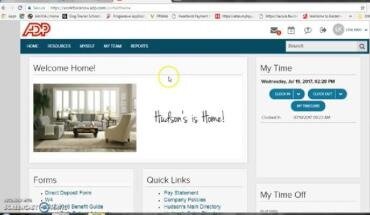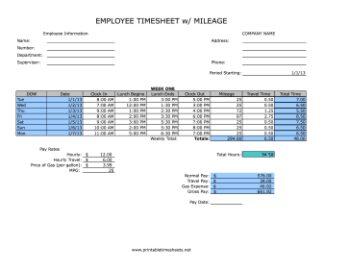The type of stock split can impact the total number of shares available. For instance, if a company issues a 2/1 stock split, the value of each share is cut in half. So if you own 50 shares of a stock that trades at $50 per share, you’ll now have 100 shares that trade at $25 a share. Say a pharmaceutical company has ten million outstanding shares in the market, which are trading for $5 per share. As the share price is lower, the company management may wish to artificially inflate the per-share price. For example, if shares of a company planning a spinoff are trading at lower levels, it may be difficult for it to price its spinoff company shares at a higher price.
How to Invest in Johnson & Johnson Stock – The Motley Fool
How to Invest in Johnson & Johnson Stock.
Posted: Sun, 16 Jul 2023 07:00:00 GMT [source]
If the company opts for a 2-for-1 stock split, the company would grant you an additional share, but each share would be valued at half the amount of the original. After the split, your two shares would be worth the same as the one share you started with. When an investor shorts a stock, they are borrowing the shares with the agreement that they will return them at some point in the future. For example, if an investor shorts 100 shares of XYZ Corp. at $25, they will be required to return 100 shares of XYZ to the lender at some point in the future. The results can be starkly different between owning a stock through a stock split and purchasing the stock after it splits.
Understanding Stock Splits
The corporate action was planned as AT&T feared that the spinoff could lead to a significant decline in its share price and could impact liquidity, business, and its ability to raise capital. Stock splits are predominantly accounting for startups the ultimate startup accounting guide the result of the company’s significant stock price rise that might impede new investors. Thus, a split is often the outcome of growth or the prospects of future growth and is a positive indication.
- This is because the true value of the company hasn’t changed at all.
- A company carrying out a reverse stock split decreases the number of its outstanding shares and increases the share price proportionately.
- For example, a single pre-split share in 1987 would have eventually been split into 224 shares after the 2020 split.
- The market cap following the stock merger is the new number of total shares times the new price per share, which is also $50 million ($25 x 2 million).
- If the stock falls below this bid price and remains lower than that threshold level over a certain period, it risks being delisted from the exchange.
- Currently, Costco’s share price is several times higher than its price back then.
This might sound like a pointless question because most people don’t get excited over a proposition like this. As an investor, the idea of “splitting” anything is probably not at the top of your list. Companies often like the idea of creating more liquidity by making a price more attractive and attainable for a larger number of people. “You might not be able to buy Apple at $500, but you could buy it at $125,” she says. © 2023 Market data provided is at least 10-minutes delayed and hosted by Barchart Solutions.
If you have any outstanding orders with your broker, such as stop loss orders, they are not always automatically adjusted. You’ll also want to keep good records, because you can’t always depend on your broker to correctly adjust your cost basis for tax purposes. Mistakes like these are less common today with modern record keeping, but they can happen. This would be where a currency increases in value so that people have to use small fractions. Then a new unit (such as dollar) can be introduced, such that an old unit is equal to 10 (or some number) new units.
What Is The Meaning Of A Stock Split?
The TSLA stock split occurred in a technology bear market as the Nasdaq was down over 30% at the time. Unfortunately, shareholders that held through the stock split experienced a 41% net loss at the lows. This may sound complicated, but it’s quite simple in real-world situations. On the morning of the effective date of a stock split, the increased number of shares will appear in your account, and the share price should be adjusted accordingly. Companies who want to expand their shareholders and potential investors both benefit from a stock split. So if you have 50 shares of a stock valued at $50 each, a 2/1 split means you’ll have 100 shares valued at $25 each.
Supermarket Plastic Bag Charge Has Led To 98% Drop in Use in … – Slashdot
Supermarket Plastic Bag Charge Has Led To 98% Drop in Use in ….
Posted: Wed, 02 Aug 2023 21:20:00 GMT [source]
This means two shares now equal the original value of one share before the split. A stock split is used primarily by companies that have seen their share prices increase substantially. Although the number of outstanding shares increases and the price per share decreases, the market capitalization (and the value of the company) does not change. As a result, stock splits help make shares more affordable to smaller investors and provides greater marketability and liquidity in the market. Existing shareholders were also given six additional shares for each share they owned prior to the stock split.
What Is A Stock Split? Why Do Companies Split Their Stock?
Companies typically engage in a stock split so that investors can more easily buy and sell shares, otherwise known as increasing the company’s liquidity. Stock splits divide a company’s shares into more shares, which in turn lowers a share’s price and increases the number of shares available. For existing shareholders of that company’s stock, this means that they’ll receive additional shares for every one share that they already hold. A reverse stock split can often signify a company in distress and is not perceived positively by market participants.
Its business model is exceptionally strong, the company is consistently profitable, and it has solid growth prospects. There are several reasons to seriously consider buying shares of Costco. For example, the company has a strong business moat, as it uses a membership-based model.
Shares owned by existing investors are replaced with a proportionally smaller number of shares. Companies might split their stocks when they believe the share price is too high for most people. By splitting stocks and cutting the price per share, they’re opening up the opportunity for more potential investors to buy into the company. A reverse split reduces the overall number of shares a shareholder owns, causing some shareholders who hold less than the minimum required by the split to be cashed out.
Are stock splits risky?
The total value of the stock shares remains unchanged because you still own the same value of shares, even if the number of shares increases. Investors who already hold shares in the company don’t need to do anything or worry about splits happening. They’ll simply wake up on the day of the split to find their holdings adjusted accordingly. Many investors would struggle to come up with that much to invest with. It would also be hard to allocate a precise amount to an investment in the stock because you can only invest in $1,000 increments. With it’s 4-to-1 split, Apple grants you three additional shares, so you now have a total of four.
Yes, Costco pays a dividend, though its dividend yield of less than 1% isn’t very impressive. However, there are other things for investors to like about Costco’s dividend program. Perhaps most impressive is how Costco’s earnings have increased over time.
A reverse stock split might be made to bring up the share price and in some cases, avoid being delisted as some exchanges have a minimum share price requirement. This is because ETNs are technically debt instruments that hold derivatives on products like commodities or volatility-linked instruments and not the actual underlying assets. The factor by which the company’s management decides to go for the reverse stock split becomes the multiple by which the market automatically adjusts the share price. They decide to go for the 1-for-5 reverse stock split, which essentially means merging five existing shares into one new share. Once the corporate action exercise is over, the company will have 2 million new shares (10 million / 5), with each share now costing $25 each ($5 x 5). The main thing to pay attention to is how the split impacts investor sentiment.

For instance, in a 2-for-1 split, every single share held by an investor now becomes two. While stock splits may not be as common as stock buybacks, they can make a material difference to investors. These dividends are not taxable or qualify to be in the dogs of the Dow process. The shareholder of record date is the date you must own the stock to be eligible to receive the additional shares or dividend. The effective date or distribution date as a dividend is the date when the additional shares are placed in your brokerage account after the market close or the following morning.
Stock split definition: what is a stock split?
This means they charge the same amount whether you trade 10 or 1,000 shares. Generally speaking, a traditional stock split is considered a good thing. Public companies have a set amount of outstanding shares available in the market. ” — likely your most burning question, then dive into more details about stock splits.

Then, the company would do a forward stock split of 100 shares for one share. This would effectively bring shareholders that were not cashed out to their original number of shares. Reverse stock splits are proposed by company management and are subject to consent from the shareholders through their voting rights. Investors often perceive splits viewed as a positive sign for a company, which can lead to a spike in its stock price. Another reason is that high share prices are a selling point for some companies. Tech companies looking to show explosive growth might not want to use a stock split to slash their per-share price because the high price helps show their success.
Investors typically conflate high share prices with a successful company. That leads to the perception that a company is doing so well that it has to split its stock to remain affordable and that it must be a good investment opportunity. In many cases, companies will see a spike in share prices after splitting their stock. Another common reason for a stock split is that it can entice investors and make a company’s shares more attractive.
One is that stock splits don’t really change anything about the business, and they can come at a regulatory cost. The company has to pay for all of the legally-required filings and the paperwork involved with adjusting the number of shares that exist. Reverse stock splits are usually implemented because a company’s share price loses significant value. There are cases that present similar situations for people in the investment industry—stock splits. But unlike the $100 scenario, the mere mention of a stock split can get an investor’s blood rushing.